By Amanda Rose Newton
Avocados are one of the most rewarding backyard fruits you can grow in Florida — but if you’ve ever wondered why some trees are loaded with fruit while others barely produce, the secret lies in A and B type flowering. Understanding how these two types work together, along with choosing the right Florida-friendly varieties, can set you up for a bumper crop year after year.
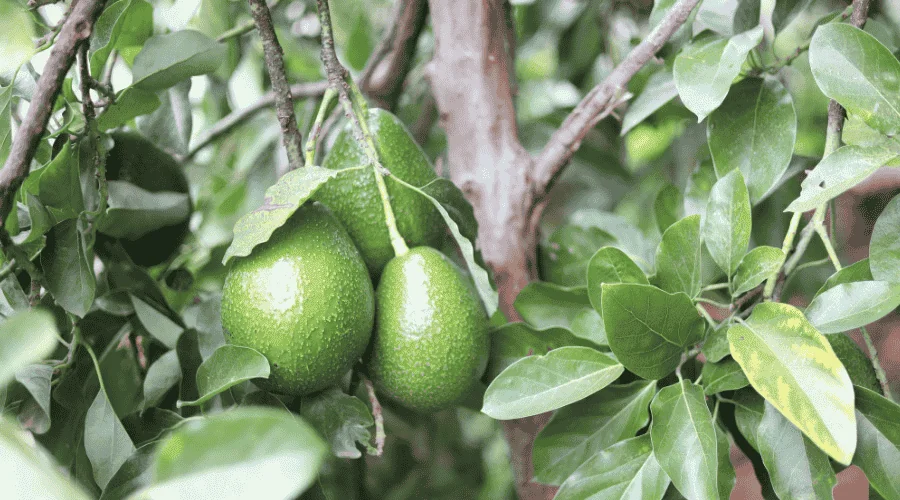
Where Avocados Come From
Before we get into the Florida side of things, it’s fun to know that avocados have two major ancestral regions:
- Mexican types — These originated in the highlands of Mexico. They tend to be more cold-hardy, have thinner skins, and include the famous Hass.
- West Indian types — These developed in the Caribbean and lowland Central America. They thrive in humid, tropical climates, have larger fruit with smoother green skin, and are less cold-tolerant.
Florida’s humid climate makes it tricky for Mexican types like Hass to thrive, but West Indian and hybrid varieties are much more at home here. That’s why you’ll see big, glossy green Florida avocados that look different from the small, pebbly Hass you find in grocery stores.
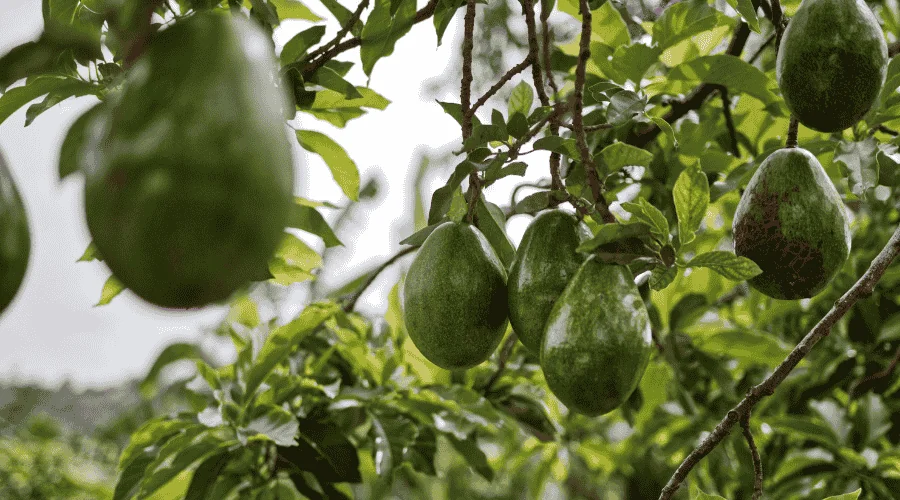
A vs. B Type Avocado Trees — What’s the Difference?
Avocado flowers have a quirky system called dichogamy. Each flower actually opens twice — once as “female” (ready to receive pollen) and once as “male” (shedding pollen).
- Type A trees: Flowers open as female in the morning, then reopen as male in the afternoon.
- Type B trees: Flowers open as female in the afternoon, then reopen as male the following morning.
The magic happens when you have both types planted nearby. Their alternating schedules increase cross-pollination and fruit set. While some varieties can self-pollinate, yields are much higher when A and B trees grow together.
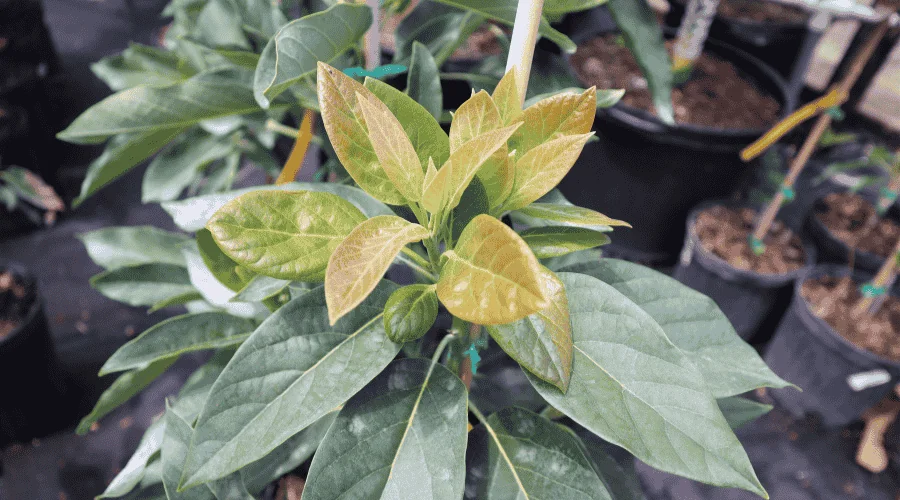
Central Florida-Friendly Varieties
South Florida gets most of the avocado attention, but Central Florida gardeners can still succeed with the right cold-hardy choices.
- Type A (Female morning, Male afternoon): ‘Choquette,’ ‘Donnie,’ ‘Lula’
- Type B (Female afternoon, Male morning): ‘Brogden,’ ‘Monroe,’ ‘Bacon’
For the best harvest, plant one of each type within 30 feet of each other. Even better — grafted trees will start bearing in 2–3 years.

Why the Famous Hass Doesn’t Work Here
You’ll find Hass avocados piled high at every grocery store, but Florida’s climate just doesn’t suit them. Hass thrives in the drier, cooler air of Mexico and California’s inland valleys. In Florida, high humidity and fungal disease pressure make Hass trees weak and unproductive.
The Alternative: ‘Brogden’ — a Florida favorite with dark purple-black skin that looks a bit like Hass, but with better disease tolerance and cold hardiness. It’s sometimes called the “Hass of the South.” While the flavor is slightly different, it’s rich, nutty, and perfect for guacamole.
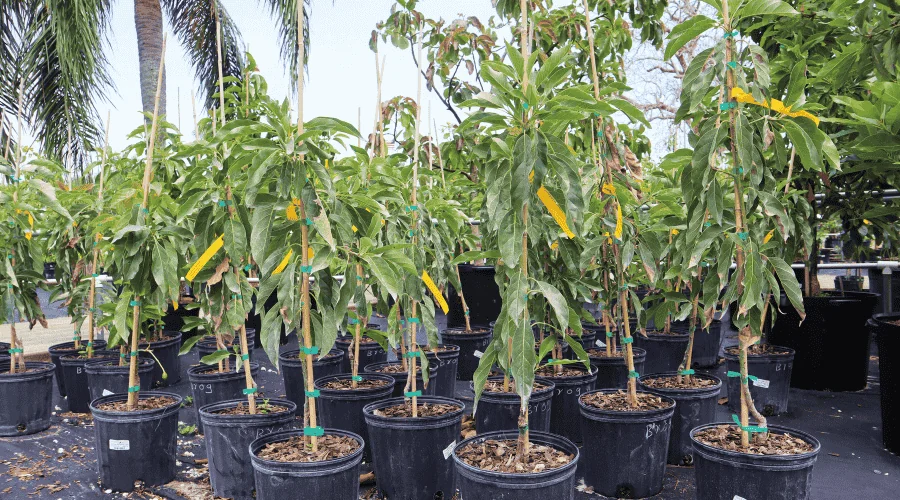
Factors That Affect Fruit Production
Even with the right tree pairings, a few other factors make or break your avocado harvest:
- Temperature: Avocado flowers are most receptive when daytime temps are between 70–85°F. Too much heat or cold during bloom reduces fruit set.
- Pollinators: Bees are the main workers here. Consider adding pollinator-friendly flowers nearby (Mexican sunflower, pentas, or porterweed) to keep them buzzing around your avocados.
- Spacing: Avocados grow big — give each tree at least 20 feet.
- Soil & Drainage: They hate “wet feet.” A slightly elevated mound or sandy soil is best for Central Florida yards.

Harvesting Tips
- Maturity matters: Unlike mangoes, avocados don’t ripen fully on the tree. Pick them when they reach mature size and let them soften on your counter.
- Timing: Different varieties ripen at different times, stretching Florida’s avocado season from June through February if you plant multiple cultivars.
- Check daily: A gentle twist and slight softness at the stem end means it’s ready to come inside.
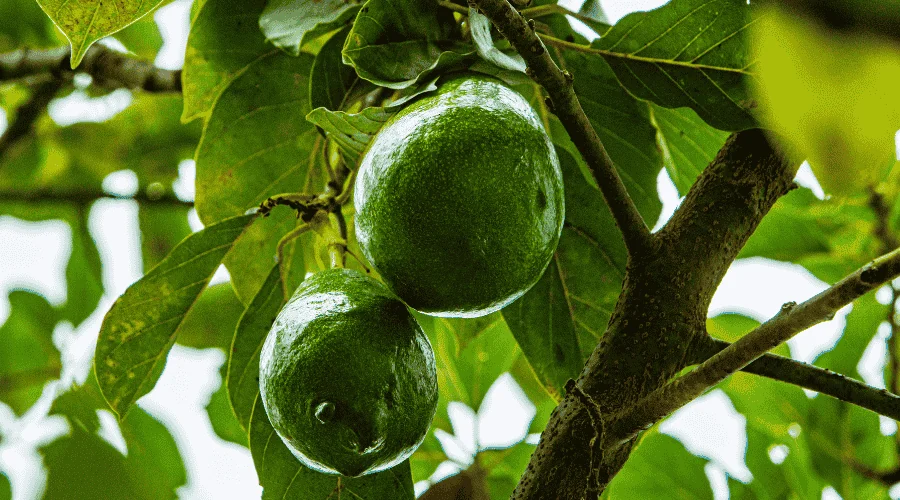
Avocados may take a little planning, but Central Florida gardeners have the perfect climate to enjoy a near year-round harvest. By pairing an A and a B-type tree, choosing Florida-friendly varieties like Brogden, and keeping in mind their Mexican vs. West Indian heritage, you can set your backyard orchard up for success. With a little help from your local pollinators, you’ll be harvesting guacamole-ready fruit in no time.


